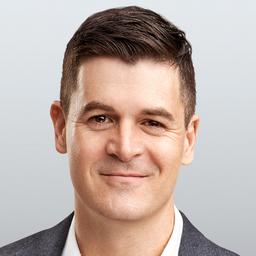What Is Human Connection?
Human connection is what happens when two or more people choose to engage in vulnerable interactions where each person is heard, seen, known, and valued. You’re connecting with others if you feel better about yourself, or the world, after you’ve been with them. At the same time, connection is a risk because people may accept you, challenge you, love you, or call you out.For your closest relationships, connection is being fully known and fully loved. Sadly, most of us believe we have to choose between being known and loved. We hide and edit parts of ourselves that have gotten us hurt before. We live in the shallow end of our relationships, afraid to go deep because of the potential consequences.
What Human Connection Isn’t
Close and intimate relationships might sound like rainbows and butterflies, but they’re actually super messy. Sooner or later, you’re going to screw them up. You’re going to be disappointed. But a messy relationship doesn’t always mean you’re doing something wrong.Human connection isn’t digital. Snapchat, TikTok, Twitter, Instagram, Facebook, and any other platform I’m not cool enough to know about don’t foster human connection. They can act as a starting point or provide information updates, but they don’t offer the depth and excitement of true connection.
How to Find Real Human Connection
Learning to connect with people is a lifelong adventure. It’s going to look different for everyone, but here are a few practices to help steer you in the right direction:Put Your Screens Down
Technology is often counterproductive to connection. As much as possible, choose movement and/or conversation with people over screen time. A new rule in my home is this: When someone speaks, all phones go down and all eyes go to the person. I want everyone in my home to feel more valuable than a flashy metal box.Schedule Time with People
Quality time comes from quantity time. If you want connection, make time for it. Turn off Netflix and call a buddy to invite them over. Stop spending your nights and weekends checking in on work, and have dinner out together or take your kids to a park. Make time for people.Look People in the Eye
This one seems pretty basic, but it makes an incredible difference in how connected you feel to someone. Eye contact is a simple and powerful way to create connection. And while you’re looking people in the eye, put down your screens and take out your headphones or earbuds. Physically demonstrate that you’re connected.Ask Questions, Then Listen
When people are talking to you, pay attention. Listen. Focus on what they’re saying. Ask follow-up questions. Dig deeper. Show people you care by practicing the art of conversation.Be Generous with Forgiveness and Grace
Relationships are risky, and they are messy. We live in a cancel culture that is constantly putting people on trial, scrutinizing their every move, and giving them death sentences for their first offense. Be different. Forgive. Be hospitable. Extend grace, compassion, and forgiveness to people‚ just like you’d want someone to do for you. Redemption is the best part of every good story.Find Groups that Matter to You and Be an Involved Member
Connection should first happen in our most intimate circles with friends and family. But eventually, we should all consider how we can be engaged members of the larger community around us. From church to school to nonprofits to local politics, follow the thread of interest that connects you to a group of people you care about. Be present. Be engaged. Let your walls down. Remember, connection is a choice. Proximity alone won’t do the trick.If you remember nothing else from this article, please hear me on this: You are worthy of having deep, life-giving relationships. I’m talking about the kind of relationships that keep you up past midnight in deep discussion, make you laugh so hard you pee your pants, and push you to take risks and grow and change. Do whatever it takes to be well and learn new skills. Do what it takes to heal. If that means forgiving people, do it. If it means forgiving yourself, do it. If it means working with a therapist, do it.
You deserve to be happy, healthy, and whole. And there’s no better time to make this happen than right now.




